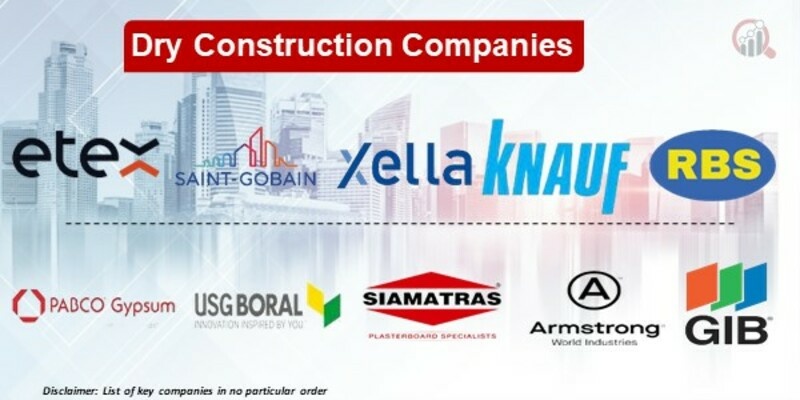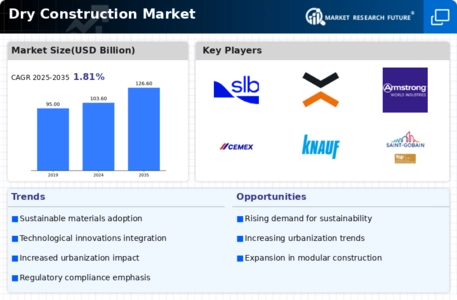Top Industry Leaders in the Dry Construction Market

Dry Construction Market
The dry construction market, a rapidly evolving ecosystem, is revolutionizing the building industry. By replacing traditional wet construction methods with prefabricated components and innovative materials, it offers faster construction times, cleaner sites, and enhanced design flexibility. But beneath the surface, a dynamic competitive landscape unfolds, driven by strategic advancements, shifting trends, and a relentless pursuit of market share.
Key Players and Strategies:
This diverse arena hosts a wide range of players, each vying for a piece of the building pie:
-
Global Giants: Knauf, USG, and Etex lead the pack with comprehensive product portfolios, advanced technological capabilities, and strong brand recognition. -
Regional Powerhouses: Saint-Gobain, CSR, and Boral dominate specific regions, often specializing in localized offerings and agile operations. -
Emerging Challengers: Innovative startups like NBK and BluHomes are making waves with disruptive technologies, sustainable materials, and direct-to-consumer models.
Factors Influencing Market Share:
In this multifaceted terrain, success hinges on mastering a specific set of tactics:
-
Product Innovation: Offering a constantly evolving range of panels, wall systems, and ceiling solutions caters to evolving architectural trends and customer demands. -
Sustainability Focus: Utilizing recycled materials, implementing energy-efficient production processes, and promoting circular economy practices resonates with environmentally conscious clients. -
Operational Efficiency: Streamlining manufacturing processes, leveraging digital technologies, and optimizing supply chains ensure cost-effectiveness and timely delivery. -
Distribution Network: Establishing a robust presence in both traditional building material suppliers and online platforms expands reach and caters to diverse buyer preferences. -
Technical Expertise: Providing specialized knowledge, installation training, and technical support strengthens brand loyalty and facilitates project success.
Key Players
- Saint Gobain (France)
- Pabco Gypsum (U.S)
- Fletcher Building (New Zealand)
- Xella Group (Germany)
- Armstrong World Industries (U.S.)
- Knauf (Germany)
- Etex Group (Belgium)
- USG Boral (Malaysia)
- CSR (Australia)
- Panel Rey (Mexico)
Recent Developments
-
October 2023: The dry construction market recovers, driven by increasing demand from the residential and commercial construction sectors in North America and Europe. -
November 2023: Local players in emerging markets like India and Southeast Asia witness significant growth, fueled by rapid urbanization and government infrastructure projects. -
December 2023: The demand for seismic-resistant dry construction solutions surges, particularly in earthquake-prone regions.










